Knauf glue: types and characteristics
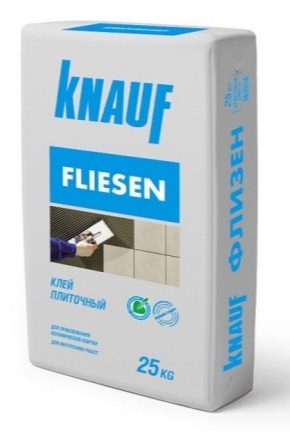
Quite often, when decorating a dwelling, the owners have to use various construction adhesives. However, not everyone knows which glue solution is best for their home. Today we will talk about Knauf adhesives.
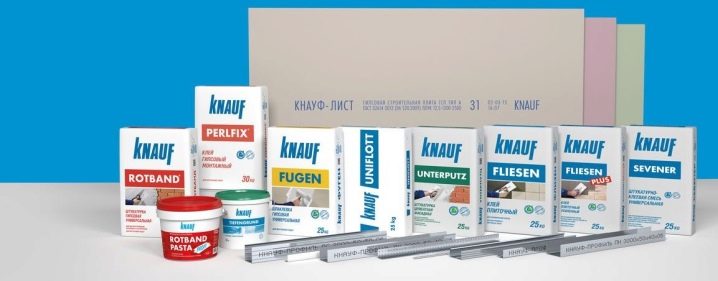
Views
Knauf is one of the most popular among consumers. Currently, it produces several types of adhesive mixtures at once. Each of them differs in its characteristics and properties. Common features for all samples are high frost resistance, moisture resistance, strength and low consumption.
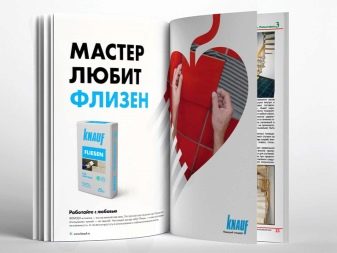
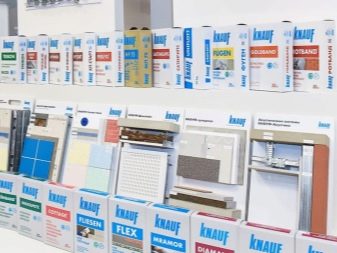
Knauf fliesen
This adhesive can be used for a wide variety of construction work. It is often used for interior and exterior decoration of premises. It is worth noting that such a solution is able to glue together even heavy, massive structures made of ceramics or porcelain stoneware.
Knauf Fliesen glue is an excellent base for fixing various insulating materials:
- polyurethane;
- polystyrene;
- foam;
- glass wool;
- mineral insulation;
- decorative items made of polystyrene.
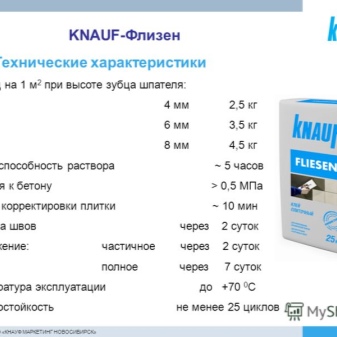
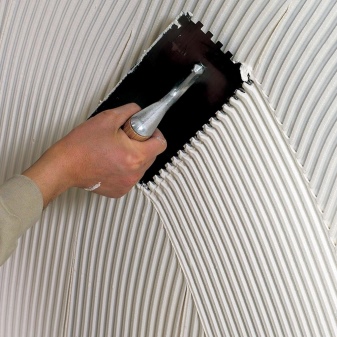
Apply this adhesive in a thin layer using a notched trowel. Experts consider this adhesive solution to be a universal type. After all, it can be used on almost any type of surface.
It should be noted that this glue has good hermetic properties. In addition, it is quite frost-resistant and moisture-resistant. The coating hardens in 1-2 days. The mixture consumption can vary greatly (250-2500 g / m2).
Most often, this glue sample is used for the following types of substrates:
- silicate;
- brick;
- cement;
- gypsum and plasterboard;
- limestone;
- concrete.
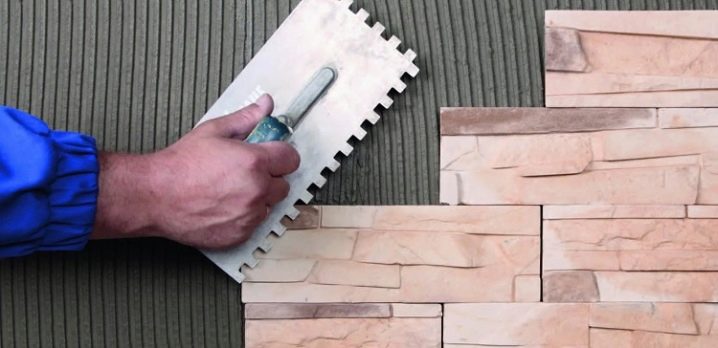
Knauf flex
This adhesive mixture is also very popular with consumers. It is distinguished by its special hermetic properties and high elasticity, boasting special moisture and frost resistance. Such a composition is ideal for bonding porous surfaces, stone, moisture-absorbing porcelain stoneware.
Such glue is usually used for gluing large, heavy boards and for installing insulating materials (expanded polystyrene, mineral wool). It is often used in the design of balconies, verandas, terraces. During the manufacture of this solution, special substances are added, which determine the high strength and reliability of the mixture.
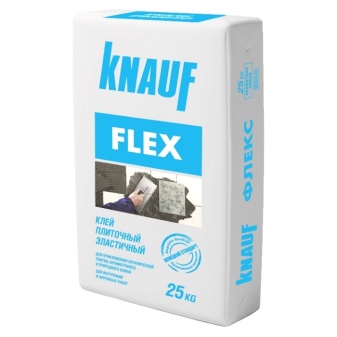

Knauf fliesen plus
Such an adhesive mixture has the same enhanced frost resistance, moisture resistance, and hermetic properties as the Knauf Fliesen sample. But at the same time, this solution can boast that its consumption is much lower compared to other samples of this brand (1.7-2.9 kg / m2).
The time for adjusting the tile structure with such glue is only 10-15 minutes. The solution hardens within a few hours. This mixture is one of the most durable and reliable. It is often used for heavy and large porcelain stoneware and ceramic tiles.
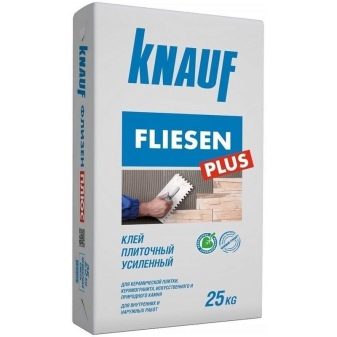
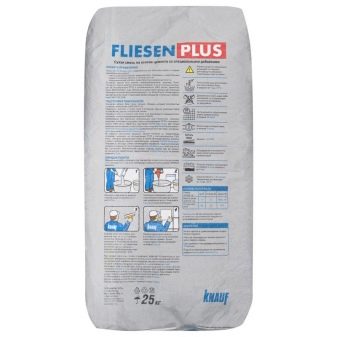
Most often, such an adhesive mixture is used for finishing the following materials:
- fake diamond;
- marble;
- mosaic and glass tiles;
- ceramics;
- porcelain stoneware;
- decorative brick;
- granite.
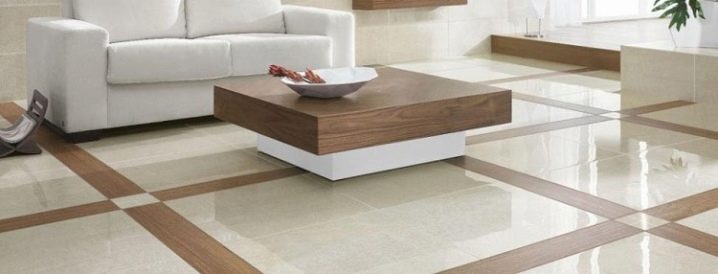
Knauf mramor
This sample of Knauf assembly glue is the fastest hardening among analogues. Therefore, plates and other parts should be fixed within the first few minutes.The composition of the mixture includes not only the usual cement mass, but also various mineral fillers, polymer additives. Such an adhesive solution is used, as a rule, for cladding a tile covering made of granite, marble.
Knauf Mramor has a solid white color. This shade allows this glue to be applied even to glass and translucent surfaces, glass mosaics. In addition, this color palette makes it possible to protect porous substrates and natural stone from fading and fading.
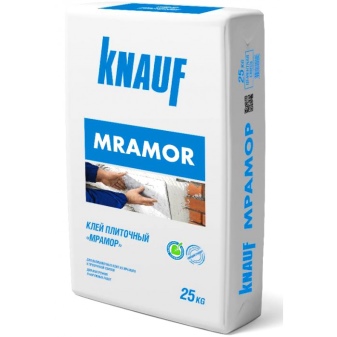
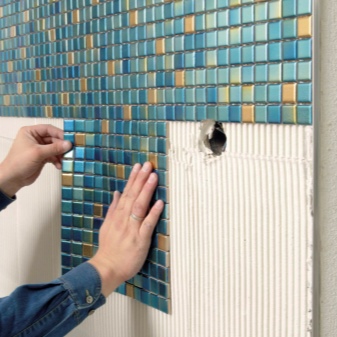
Such an adhesive is suitable for both external and internal decoration. It can be applied to almost any type of surface: concrete, gypsum and plasterboard structures, screed, cement-sand plaster, cement-particle products. He can glue different types of materials.
Such a sample is grabbed, as already mentioned, very quickly., the time for adjusting the tiles is no more than 10 minutes. The composition is perfect for structures that are exposed to heavy loads. At the same time, most experts recommend glueing both the base and the facing material with glue.
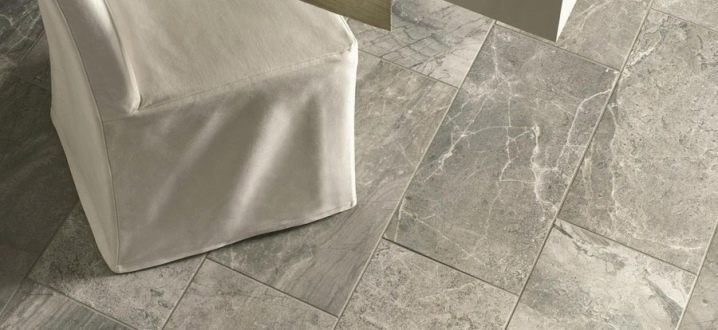
Specifications
Knauf products are used for both internal and external finishing works. Various mineral elements are used in its manufacture. With the help of them, additional useful properties are given to the glue.
Among the characteristics of the products, several main qualities can be distinguished.
- Low substance consumption. It is no more than 2-2.9 kg / m2. The material is offered in various packaging, the most popular is the 25 kg package, which is used for renovating large rooms.
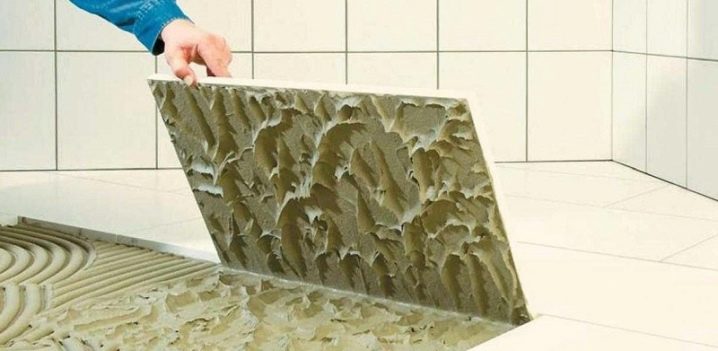
- High level of tightness. It provides good adhesion of individual parts to each other.
- Freezes quickly. The glue dries in just 20-48 hours.
- Resistant to temperature fluctuations. The base can withstand temperatures from -50 ° C to + 80 ° C.
Knauf glue, which has such a considerable list of important characteristics, is widely used in a wide variety of areas of construction work. Most often, they are combined with massive ceramic, porcelain stoneware products, as well as granite and marble slabs. Such a material is also suitable for ordinary lightweight tile coatings.
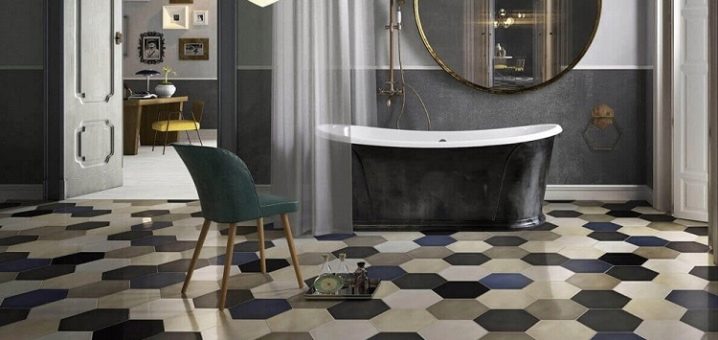
Advantages and disadvantages
Building adhesives produced by Knauf boast a number of important advantages.
- High frost resistance. The adhesive can withstand sharp, strong fluctuations in temperature, while not breaking or damaging the tile floor.
- Strength. This base will be able to serve for many years. In the manufacture of such products, special mineral additives are used, which make it solid and reliable.
- Good adhesion. This glue is capable of connecting dissimilar solid elements, regardless of their mass and size.
- Elasticity. Thanks to this excellent property, the substance can be applied even to rough, uneven surfaces. The glue will easily hide all defects.
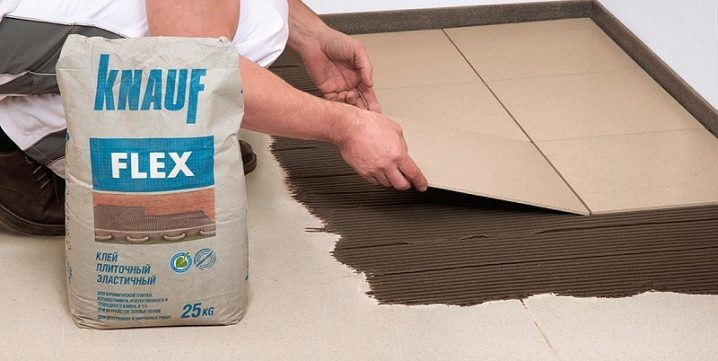
- Low consumption. When carrying out external or internal finishing work, Knauf glue can be used in small quantities, this will not affect the quality of the tiled structure in any way.
- Easy to apply. Most experts advise to simply cover the substrate with a thin layer of the mixture using a conventional notched trowel.
- High moisture resistance. When decorating a room with such material, one should not worry about the harmful effects of moisture, because it is absolutely not subject to its influence.
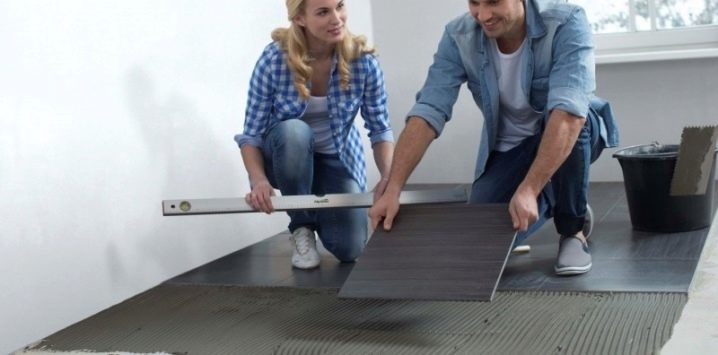
Despite such a rather large list of positive features of Knauf adhesive solutions, they also have certain disadvantages.
- Short correction time. Often, the glue hardens too quickly on the material, so there is little time left for leveling the tiles.
- High price. Some buyers complain about the expensive price of the material. But at the same time, many experts argue that the quality of the base fully justifies all the costs.
Today, due to all their advantages, the adhesives of this manufacturer are very popular among consumers, who leave many positive reviews about the products. Buyers separately note the excellent quality, strength and reliability of such a mixture.
Also, consumers often leave reviews on the Internet about the high level of product resistance to strong temperature changes. Often they note the simplicity of the installation work, which does not require a lot of effort and time.
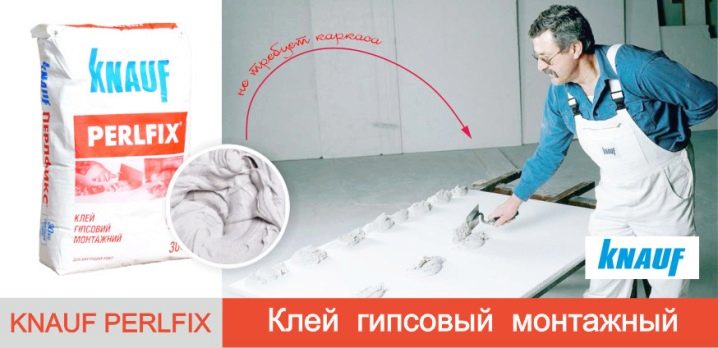
Application
Currently, Knauf adhesive mixtures are widely used in various finishing works. They can be used both indoors and outdoors. Most often, such adhesives are used to connect ceramic, granite and other slabs to each other. Also, often such compositions are glued together with PGP and GVL-plates, sheets of plasterboard, various structures from water panels, etc.
But it should be remembered that before directly applying the material to the surface, you need to properly prepare the base. First of all, it is worth carefully cleaning the material, which will be covered with a mixture of dust and dirt. Sometimes experts advise even priming or sanding the base.
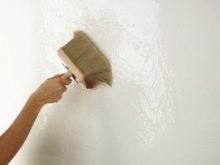
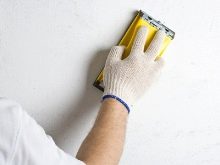
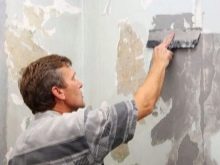
Mix the solution in accordance with the proportions indicated on the instructions for use of the composition. After mixing the components, the resulting mass is applied to the main surface. Most often, the base should be covered with one thin layer using a special spatula.
After applying the mixture to the work surface, you need to evenly bond the coating to the base. It is important to note that if you are installing the plates, then you definitely need to adjust the elements, since they are often displaced. To avoid such situations, each part can simply be fixed with special plastic crosses.
After that, the seams between the individual tiles should be processed. This will add aesthetics and accuracy to the finished cladding. Otherwise, glue residues will appear on the edges of the elements, which will instantly dry out and spoil the overall picture of the coating.
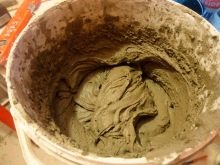
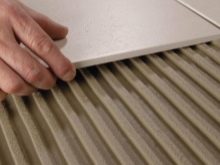
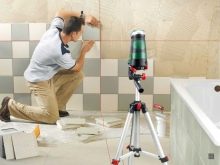
In the next video you will find Knauf Perlfix glue application technology.













The comment was sent successfully.